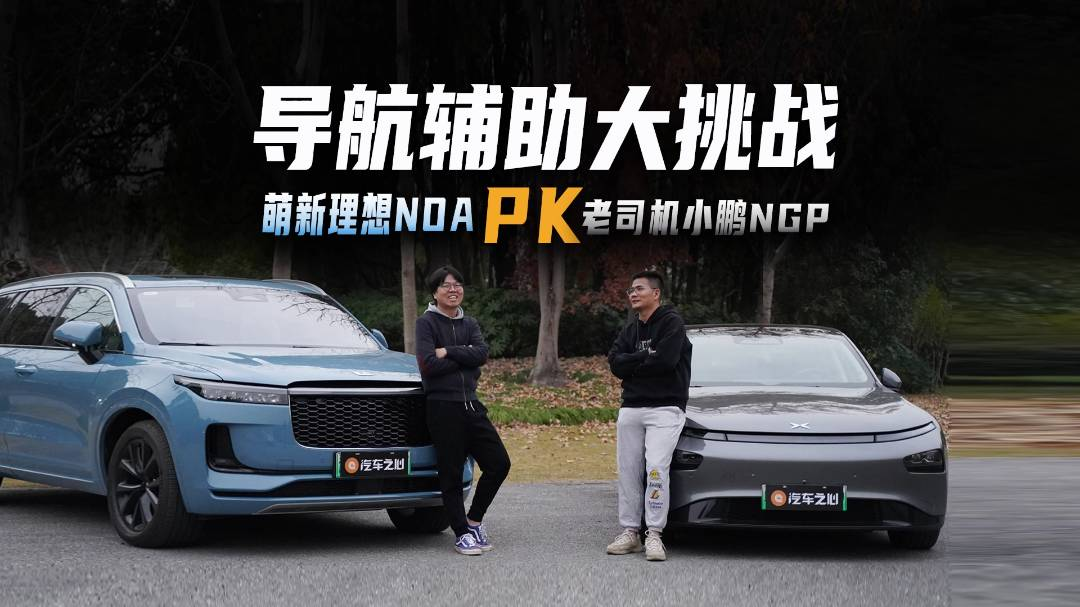Author: Chen Nianhang
The navigation assisted driving system is becoming an important configuration of best-selling intelligent cars. After Tesla pioneered NOA, many domestic car companies followed suit, and many popular models were born.
In early December 2021, the long-awaited navigation assisted driving system of Ideal ONE was finally launched, which added another bright spot to Ideal ONE, an already popular mid-to-large-sized SUV.
So, is the performance of Ideal ONE’s navigation assisted driving “ideal” enough? We conducted a “high-speed scenario” navigation assisted driving challenge.
To make the experience more intuitive and vivid, we invited a special guest – XPeng P7 with NGP to participate in this comparative test.
First, let’s get to know the two protagonists of this episode.
With its outstanding product definition ability and understanding of user needs, Ideal ONE has become the only Chinese brand model in the price range of over 300,000 yuan that has achieved more than 10,000 deliveries in a single month.
In the past November and December, its delivery volume exceeded 13,000 units.
In the recent OTA 3.0 update, Ideal ONE launched the NOA navigation assisted driving system. Since then, the product power coordinate system of Ideal ONE has added another key intelligent ability.
Moreover, it is worth mentioning that the most core brain of the system is two domestically produced self-driving chips- Horizon Journey 3. According to Li Xiang’s Weibo, the number of vehicles with the Ideal navigation assisted driving function has exceeded 60,000.
As a sporty car, XPeng P7 not only has a striking appearance but also enviable intelligent internals. In 2021, it has sold more than 60,000 units, and in December alone, it delivered 7,459 units, which is also a popular model.
It also has the navigation assisted driving system NGP, which has been well received in the industry for its stable performance.
In January 2021, the XPeng Automatic Navigation Assisted Driving NGP beta was released, and in the past year, XPeng car owners have driven more than 20 million kilometers and accumulated a driving time of more than 200,000 hours using NGP.One of them is a “newbie” who has just entered the field of navigation-assisted driving, while the other is a “veteran driver” who has been in this field for over a year and his abilities have been recognized by the industry.
When the ideal NOA meets XPeng NGP, when the “newbie” meets the “veteran driver”, do they have the ability to fight?
First, let’s take a look at the automatic driving hardware configuration of the two cars:
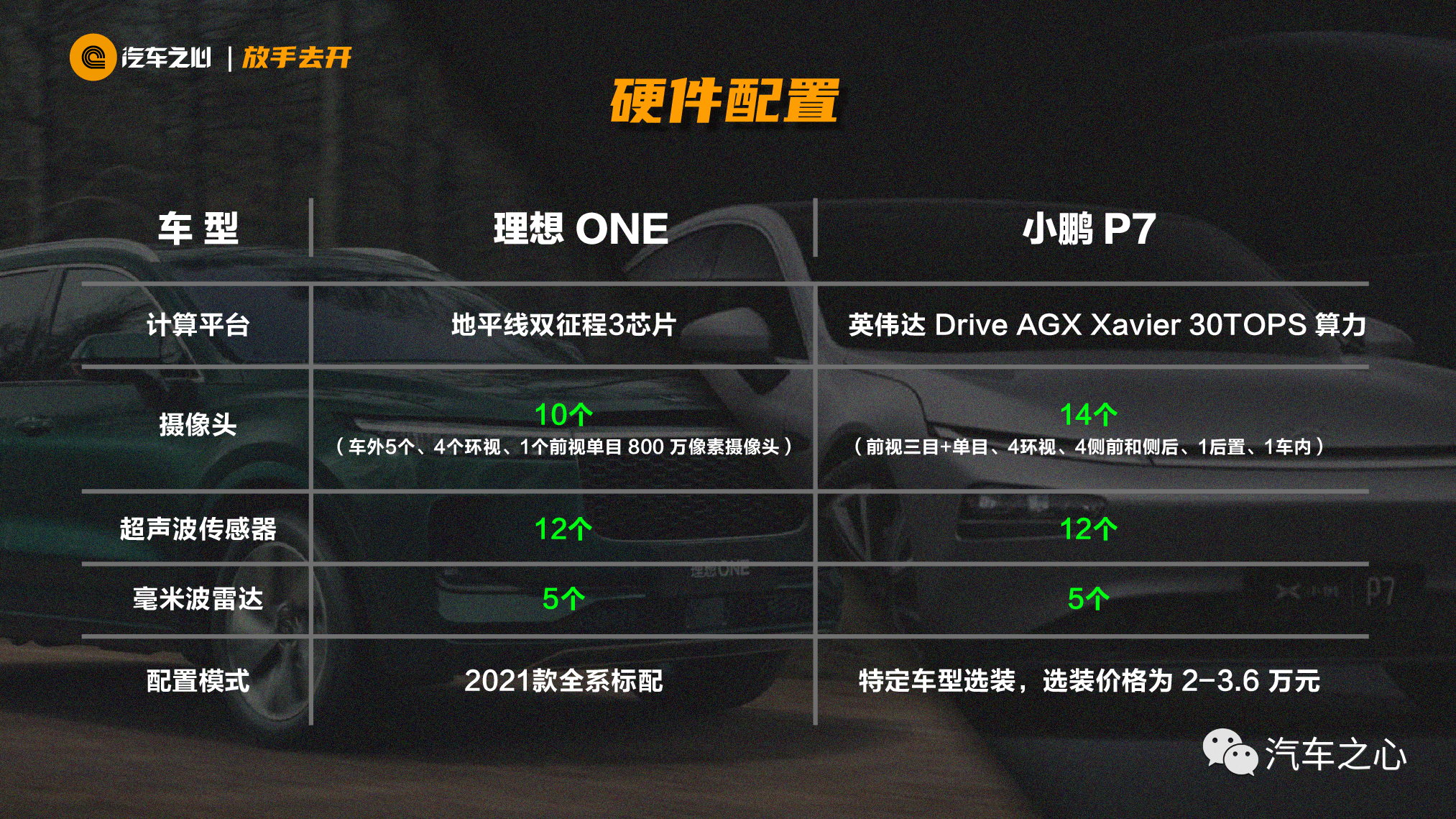
The route we tested this time starts from the Shanghai Automobile Museum in Anting to the People’s Government of Baoshan District, with a total of 5 high-speed road switches and 6 ramp transitions, with a total driving distance of nearly 200 kilometers.
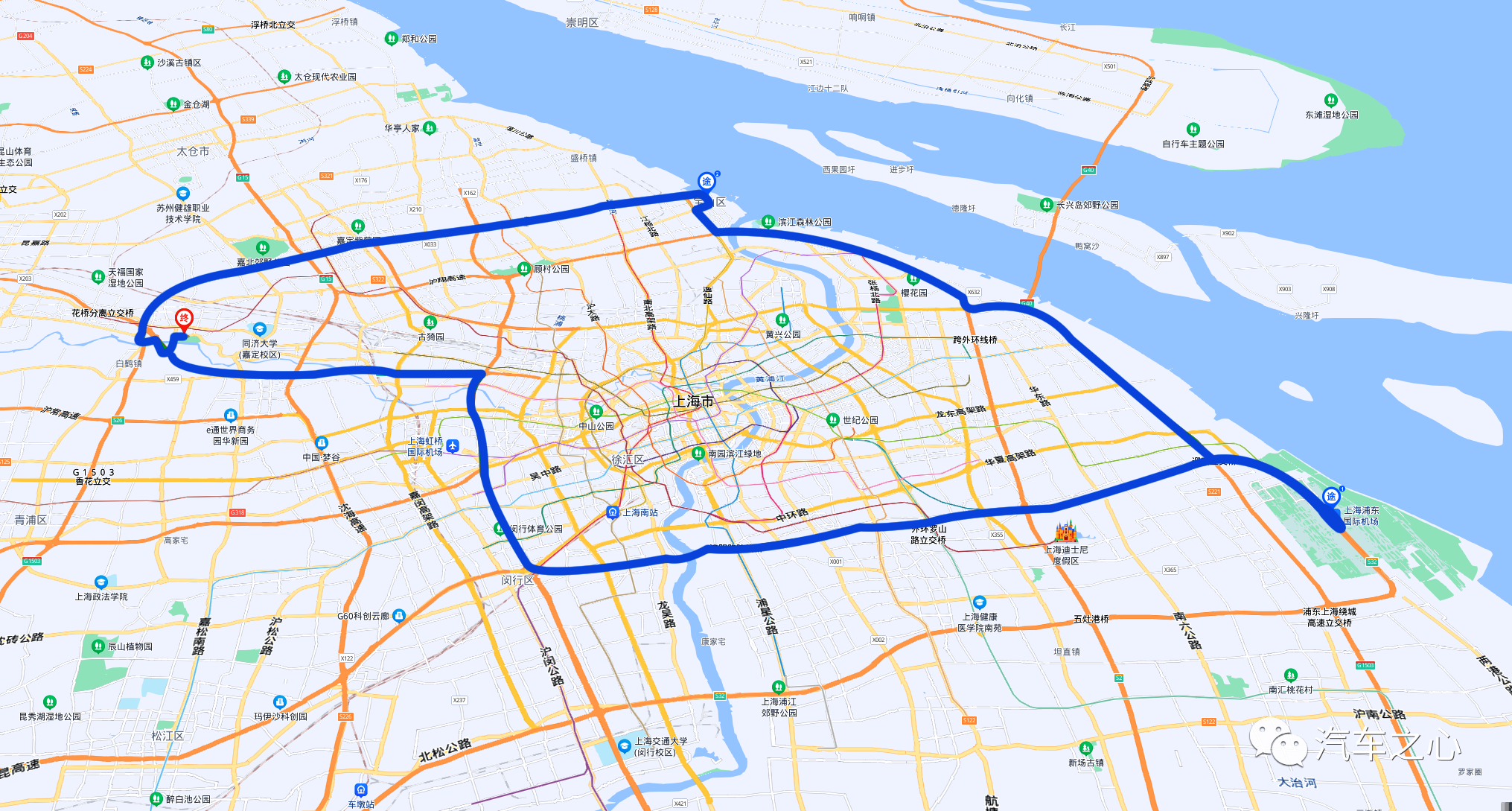
Our test is mainly divided into five parts.
-
Part 1: Performance on on-ramps and off-ramps
-
Part 2: Lane change plans (including special changing lane scenarios)
-
Part 3: Emergency responses
-
Part 4: Human-machine interaction
-
Part 5: Summary
Part 1: On-ramps and off-ramps: XPeng is aggressive, while One is steady
In this part, we mainly look at:
-
How does the vehicle merge onto the main road?
-
How to exit the ramp reasonably?
-
What is the driving status on the ramp?
Merging onto the main road from the ramp
When merging onto the main road from the ramp, the ideal ONE starts the operation of merging onto the main road only when approaching the end of the auxiliary road, while XPeng P7 starts merging onto the main road as soon as it leaves the ramp.
For short-distance highways, both cars usually choose the first or second lane on the right side, without making unnecessary lane changes. Both have a high success rate in merging onto the main road.
However, we need to emphasize XPeng P7’s performance when switching from Beijing-Shanghai Expressway to the Outer Ring Expressway.
When XPeng P7 was about to merge onto the Outer Ring Expressway after leaving the ramp, a large truck suddenly cut in from the left front of the car, and there had been a car driving on the left rear side of XPeng P7. At this time, XPeng P7 reacts like an experienced driver, controlling speed and waiting for the right moment to merge onto the main road.
I did not take over during the process, just wanted to see where its limit performance was. Fortunately, it did not disappoint my expectations.
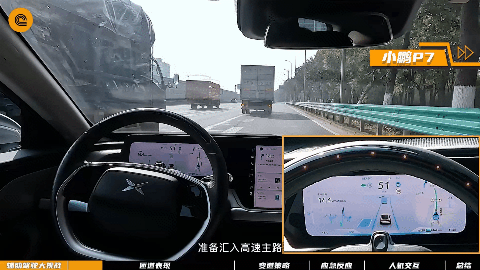
Below is the performance of both cars merging onto the main road during the trip:
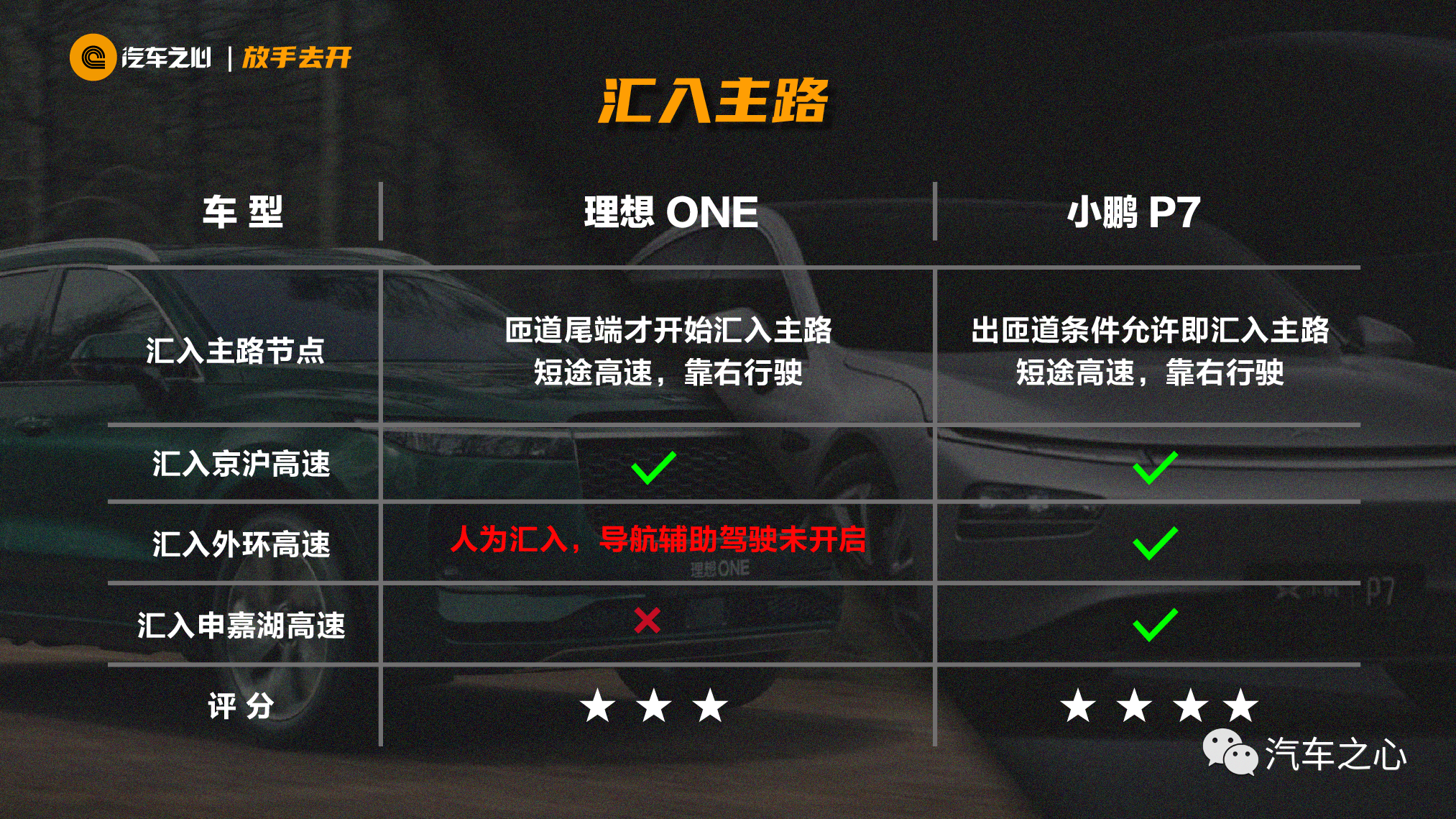
Entering the rampWhen needing to exit the main road from the ramp, both cars usually change lanes about 1 kilometer away from the ramp. The selection success rate of the XPeng P7 is higher than that of the Li Xiang ONE.
There were a total of 5 chances to select the ramp, and the XPeng P7 succeeded 2 times, while the Li Xiang ONE only succeeded once. Although the success rate was not high, it is worth mentioning these scenarios.
On the road section from the outer ring expressway to Hu Jin expressway, the XPeng P7 began to change lanes and choose the ramp. Due to complex road conditions on the right, the P7 directly found a gap and resolutely changed lanes, successfully entering the ramp.
It can be said that it was extremely resolute but also made people nervous.
In the same section of the road, the Li Xiang ONE began to choose the ramp and issued a change lane command about 800-100 meters away from the ramp (after manual confirmation, there was a situation of solid line changing lanes). This operation was interrupted due to the sudden change of the preceding vehicle. We then reactivated the navigation-assisted driving at a distance of about 350 meters. However, there was always traffic flow passing by on the right side, and the navigation-assisted driving ultimately quit, indicating the failure to enter the ramp.
On the road section from Hu Jin expressway to Shen Jia Hu high-speed, the XPeng P7 did not successfully enter two consecutive ramps.
Firstly, the XPeng P7 prepared to enter the ramp but did not succeed due to oncoming traffic. Afterwards, there was another operation to choose the ramp, which was still unsuccessful. The system did not exit, nor did it suggest that we missed the ramp.
Next, let’s take a look at the performance of the Li Xiang ONE on this road section. If it cannot change to the other lane, the Li Xiang ONE will prompt a manual takeover, and the voice will report that the road ahead is complex and the navigation-assisted driving will exit. This is more user-friendly than the XPeng P7.
The following is the performance of the two systems when entering the ramp from the main road:
When driving on the ramp, both cars can automatically adjust their speeds based on the ramp speed limit and have good passing ability, but there are also special cases.
On the ramp section from Hu Jin expressway to Shen Jia Hu high-speed, there was a downgrade of XPeng P7’s NGP, which had a sound prompt. Less than 5 seconds later, it restored NGP. It was speculated that high-precision map data was lost.
In the same section of the road, the performance of the Li Xiang ONE is somewhat worrying for the safety supervisor.The leftmost lane in this ramp is obviously narrowing, and when driving on this lane, the safety operator of the Ideal ONE felt that the car was too close to the left guardrail, so they took over manually. On the other hand, the XPeng P7 chooses the middle lane in the ramp, which is more reasonable.
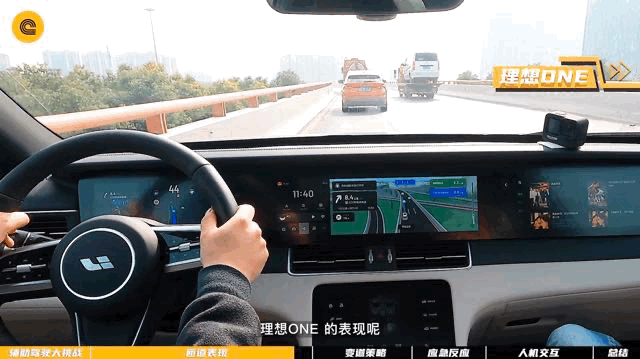
Part 2 Lane Change Scheme: XPeng like a “young man”, Ideal interprets the “dad car”
In this part, we mainly focus on how the two cars choose lanes during normal high-speed driving and whether they will change lanes when encountering slow-moving vehicles ahead.
In terms of lane change efficiency, since the Ideal ONE needs to manually confirm the lane change control key, and the environmental variables of high-speed vehicles are relatively large, especially for new users who are not familiar with the system, there is a learning cost.
In terms of lane change experience, when XPeng turns on the signal, it has already detected the surrounding safety environment in advance, and determines the lane change before turning on the signal. Then the vehicle completes the entire lane change action, and the whole process is very fast and decisive.
When overtaking by changing lanes, the acceleration experience is also relatively linear, and the experience is very good. On the other hand, the Ideal ONE only initiates the turn signal when it detects a slow vehicle ahead. After confirming the recommended lane change direction through voice prompts and being manually confirmed, the vehicle executes the lane change operation.
Overall, the lane change experience of XPeng and Ideal is good. The XPeng P7 feels more decisive and proactive in lane change, with high efficiency, like a young man driving a car; the lane change initiative of the Ideal ONE is lower, and it generally chooses not to change lanes. The sense of experience when changing lanes is also gentler, which is consistent with the positioning of the “dad car.”
However, there are also some criticisms. For example, on the outer ring expressway section, there was a large truck in the right lane, and the XPeng P7 did not choose to change to the left lane, but kept braking, and it is not clear why it happened.
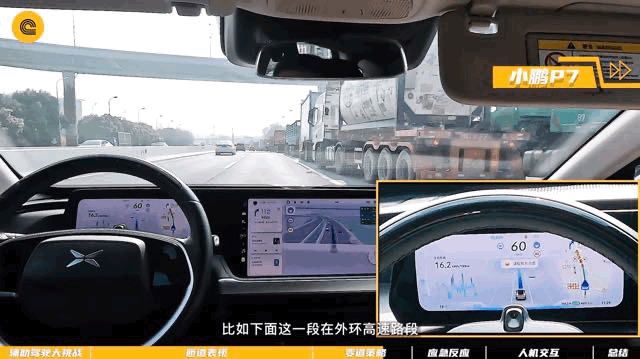
Similarly, on this section of the road, the Ideal ONE voice prompt recommended a left lane change. After being manually confirmed, the vehicle began to change lanes, but the lane change operation was aborted midway, and the reason for this was not clear. The key point is that after the exit, the speed suddenly dropped, which could easily cause rear-end collisions.
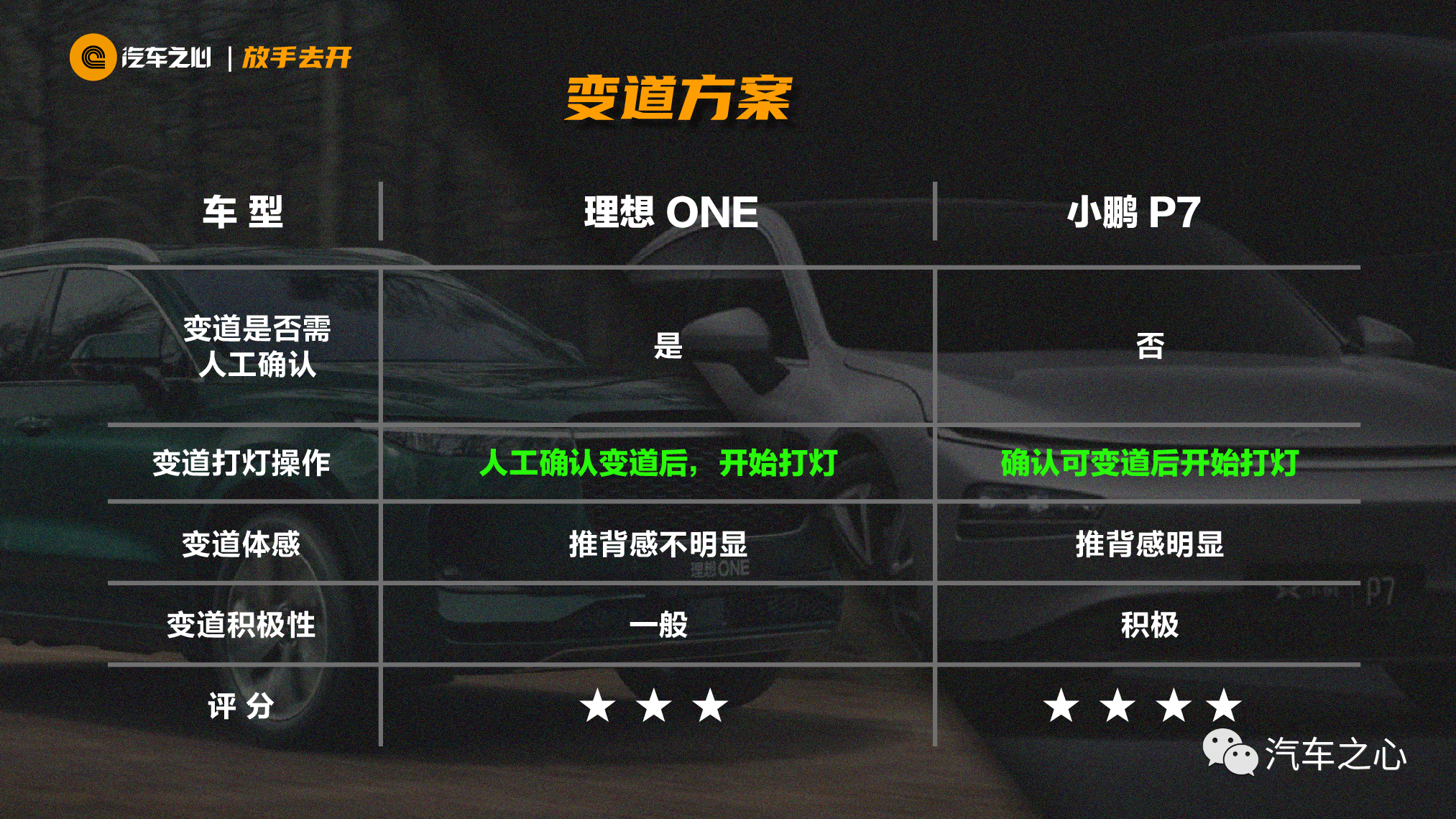
Part 3 Emergency Response: Both cars have a high success rate in dealing with cut-ins
In this part, we mainly look at how the two cars deal with sudden cut-ins and unidentified objects on the road at speeds of 30 km/h or 60-80 km/h. In terms of emergency response, both cars performed relatively well.In congested sections of the outer ring expressway, the XPeng P7 was cut into from the left front, with an obvious braking response from the XPeng and equally impressive performance from the Li Xiang One, which braked significantly in response to being cut into by three cars in quick succession. However, it did not come to a complete stop to make way for them, which is a bit of a veteran driver move.
On smooth sections of the outer ring expressway, speeds of 60-80 km/h can be reached. The XPeng P7 was in the middle lane when the car in front suddenly changed lanes and cut in. Although the XPeng’s response was a bit slow, there was still a slight braking action, indicating that the system had sensed this sudden cut-in.
In contrast, the Li Xiang One also encountered a sudden lane change after completing its own lane change in this speed range. It did not brake in time, but the safety officer intervened and applied the brakes manually.
During this test, we also encountered some debris left on the road by a preceding vehicle on the Shenjiahuhu Expressway. We didn’t know what it was, and neither car identified it or took any emergency action.
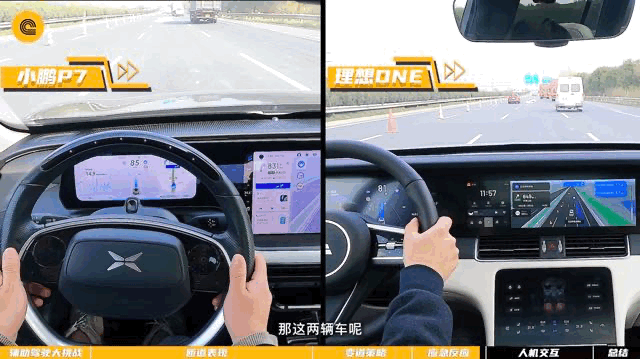
Part Four: Human-Machine Interaction: XPeng Is Smooth, Li Xiang Follows the Rules
Both the XPeng P7 and the Li Xiang One use the lever on the steering wheel to activate the navigation-assisted driving system.
There is a difference between the two cars in terms of their steering wheel sensing. The Li Xiang One uses grip sensing, while the XPeng P7 uses torque sensing.
One thing to note is that the XPeng P7 will beep and remind the driver to turn the steering wheel every 30 seconds or so. This frequent reminder can be quite annoying, but it is for safety reasons, in compliance with laws and regulations, according to XPeng engineers.
Both systems display visual information on the dashboard and central control screen, modeling the environment. They can display a 12-lane road in both directions and, with the support of high-precision maps, they can recognize and 3D-model roads, road markings, road edges, bridges, buildings, and even ice cream cones.
In terms of visual presentation and interaction, the XPeng P7 is superior to the Li Xiang One, with more delicate and smoother designs.
Both systems require navigation route settings in the car system. After entering the toll station, the lane centering control (LCC) function will be activated first. After exiting the ramp and entering the main road, the LCC function will automatically switch to the navigation-assisted driving interface, and the visual presentation will also switch uniformly.
Both systems will give a takeover prompt at a distance of 300-400 meters before we enter the next toll station.
For the takeover prompt, the XPeng P7 will give a voice prompt, and a red steering wheel prompt will also appear on both screens. In contrast, the Li Xiang One only has a voice alert, and there is no obvious change in the interface.Here are the detailed comparisons of two sets of human-computer interaction systems:
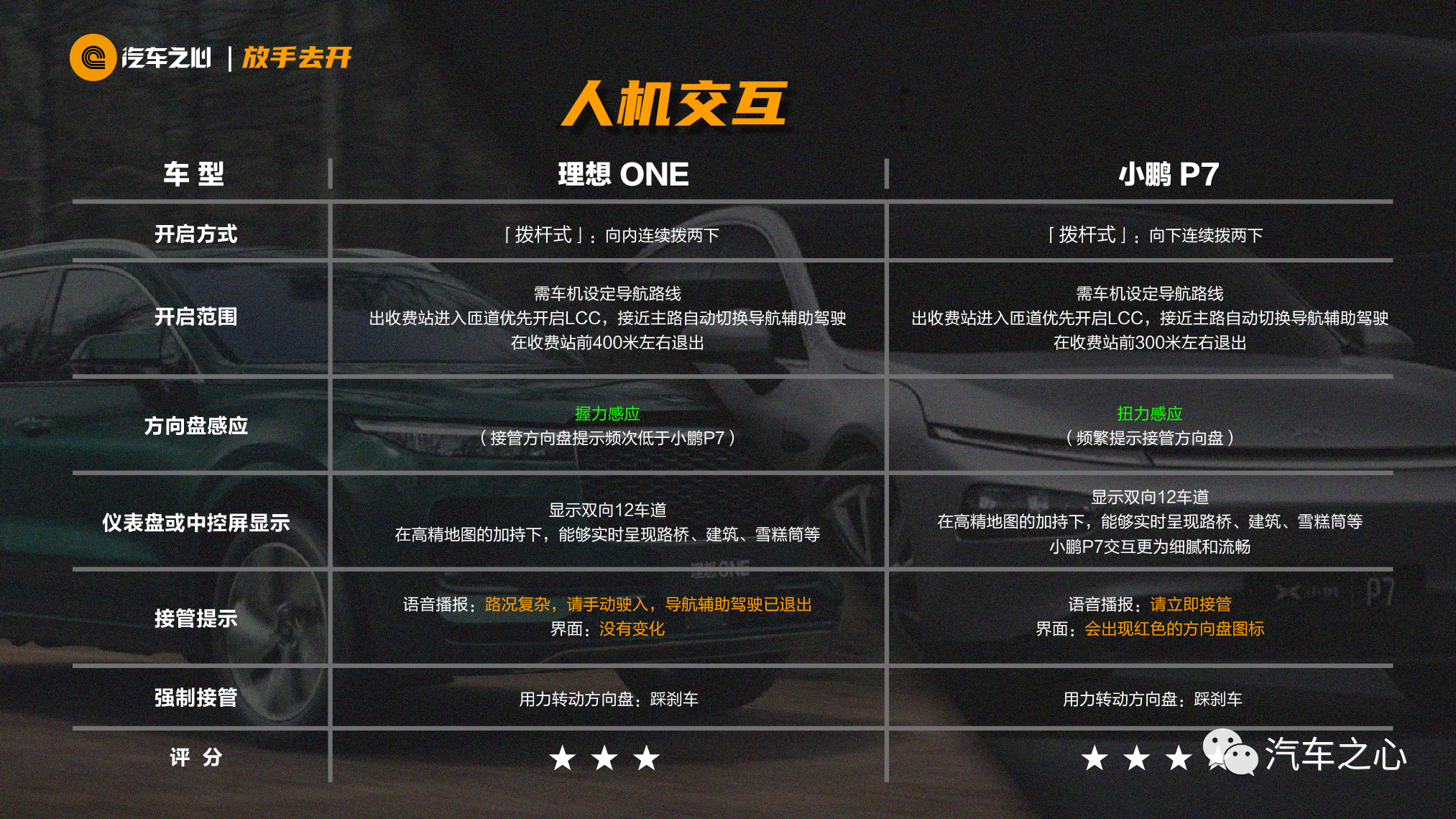
Part 5 Conclusion: Navigation assisted driving is not “born mature”
Overall, in terms of practicality and functionality, the NGP of XPeng P7 is more sophisticated than the navigation assisted driving of Li ONE. On the other hand, in terms of safety, Li ONE’s navigation assisted driving is more careful and more in line with the positioning of a “daddy car”.
For the performance of these two systems, we have evaluated them based on various indicators and obtained the following results:
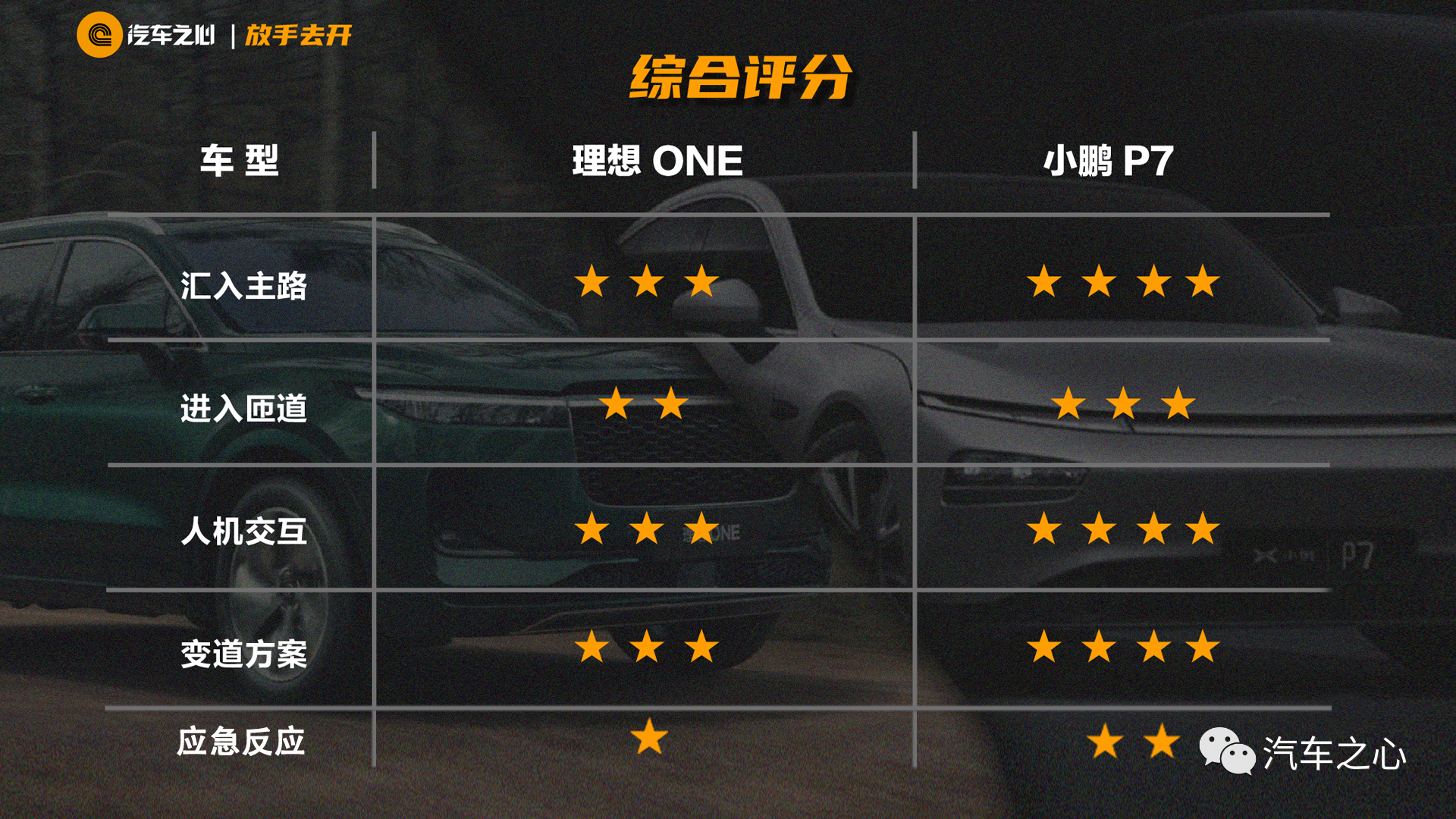
It is obvious that XPeng NGP, which is already in its second year of development, outperforms the newly released Li ONE in all indicators. This result is not surprising because XPeng has accumulated the feedback and experience of actual user usage for more than a year, making the NGP more mature.
Autonomous driving and navigation assisted driving are not born mature, there is only one way forward: collecting user data, iterating the system continuously, and strengthening the robustness of the functionality in different scenarios.
Both Li ONE’s navigation assisted driving and XPeng NGP are new features and selling points developed under the car manufacturer’s self-developed system, with Li ONE one year behind XPeng in terms of entry time. This fairness issue is present in this competition, but we believe that with time, this timing imbalance will gradually disappear.
We will continue to pay attention to these two systems, track their OTA updates, and see how they will perform in the next major version update.
Besides Li ONE and XPeng, there are more and more players offering navigation assisted driving, including NIO NOP, Great Wall + Haomo NOH, Zeekr NOA, ARCFOXxing + Huawei, MAXIEYE NOM… Carnewschina.com will continue to pay attention to this assisted driving function and bring more experiences and reviews.
Finally, although navigation assisted driving brings convenience to our travel, it is not fully autonomous driving. When using this function, we still need to keep an eye on the vehicle and road conditions at all times.
This article is a translation by ChatGPT of a Chinese report from 42HOW. If you have any questions about it, please email bd@42how.com.
